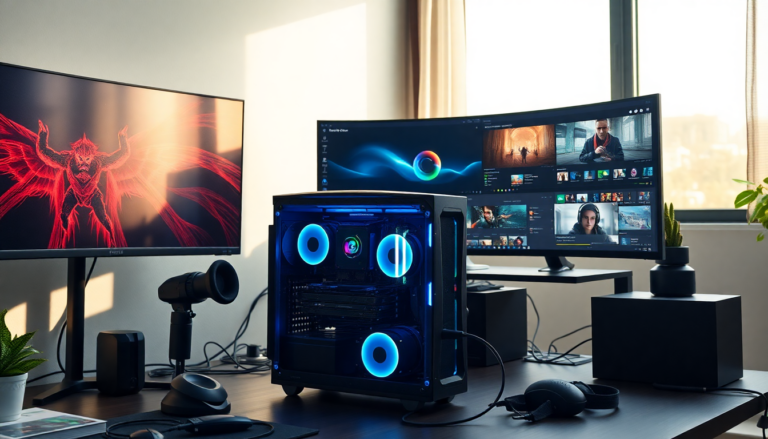Argomenti trattati
Imagine a world where your gaming performance is not just good, but *extraordinary*. That’s the anticipation surrounding Nvidia’s upcoming RTX 5080 Super, which promises to redefine what gamers and tech enthusiasts can expect from graphics cards. With whispers from reliable sources suggesting a substantial upgrade in VRAM and power consumption, the buzz is palpable. Could this be the GPU that finally meets the demands of modern gaming and content creation?
The specs that have everyone talking
According to a recent leak by the well-known hardware leaker Kopite, the RTX 5080 Super is set to feature a staggering 24GB of GDDR7 memory. Compare this to its predecessor, the RTX 5080, which has only 16GB, and you start to see why there’s so much excitement. This isn’t just a minor bump; it’s a *50% increase in VRAM capacity*, which could drastically enhance performance in memory-intensive applications and games.
One of the most intriguing aspects of the RTX 5080 Super is its Total Graphics Power (TGP). Rumored to exceed **400W**, this power requirement suggests that Nvidia is pulling out all the stops to ensure the card can deliver the performance gamers crave. I remember when I first experienced the leap from GDDR5 to GDDR6; it felt revolutionary at the time. Now, with GDDR7 on the table, I can only imagine how memory bandwidth will influence gaming experiences.
What does GDDR7 bring to the table?
For those who might not be familiar, GDDR7 memory modules come in exciting densities of 16Gb (2GB) and 24Gb (3GB), with greater capacities expected in the future. The real kicker? The denser memory directly translates to enhanced performance without increasing the memory bus width. This means that even with the same 256-bit bus width, the RTX 5080 Super could achieve an impressive memory bandwidth of around 1 TB/s. That’s roughly 6.6% faster than the stock RTX 5080!
But here’s where it gets really interesting: Nvidia’s potential transition from standard 16Gb modules to denser 24Gb options could signify a significant shift in their approach. As many know, higher bandwidth can lead to smoother gameplay and better rendering capabilities in high-resolution games, which is something we all crave as technology continues to advance.
The architecture behind the power
It’s not just about the memory; the architecture plays a crucial role too. The RTX 5080 Super is reportedly employing the full-fat GB203 die, mirroring the RTX 5080. With 10,752 CUDA cores and 84 Streaming Multiprocessors, the architecture is designed to handle demanding tasks with ease. This configuration allows the card to maintain excellent performance across a range of applications from gaming to professional rendering tasks.
Furthermore, the increase in CUDA cores means more parallel processing power, which translates to better performance in tasks such as real-time ray tracing and AI-enhanced graphics. I’ve seen firsthand how demanding modern games can be, and having a powerful GPU can make all the difference in achieving that buttery-smooth frame rate.
Pricing and market implications
Now, let’s talk dollars. The RTX 5080 Super is expected to retail between **$1,000 to $1,500**, assuming Nvidia sticks to its suggested MSRP. It’s a hefty price tag, but it’s not entirely surprising given the capabilities this card is rumored to offer. In a tech market where prices can feel like a game of roulette, I can’t help but think back to when the RTX 3080 was released. The excitement was palpable, but so were the supply issues. Will the same happen with the 5080 Super? Only time will tell.
Interestingly, Nvidia seems to be cautious about releasing Super/Ti models for the flagship RTX 5090. Why? Because it could cannibalize sales of their professional GPUs. The **RTX Pro 4000 Blackwell**, which is expected to be priced around $1,500 with its 24GB of memory, serves as a harbinger of where Nvidia may draw the line for consumer graphics cards.
Final thoughts: a game changer on the horizon?
As we eagerly await Nvidia’s formal announcement, the excitement surrounding the RTX 5080 Super is undeniable. Personally, I believe this could be a pivotal moment for gamers and creators alike. The leap in VRAM and bandwidth could usher in a new era of performance, but will it live up to the hype? I mean, we’ve been burned before, right?
So, as we stand on the brink of this potential revolution in graphics technology, one can’t help but wonder: are we ready for the *super* experience? Let’s keep our fingers crossed that Nvidia delivers something truly groundbreaking. Until then, let’s see how the competition responds because, in the end, it’s always a race to the top.

